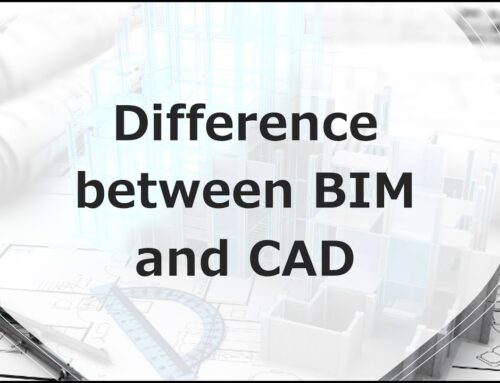What Are Shop Drawings? A Complete Guide for Architects and Contractors
You must have encountered shop drawings during your work on construction projects. These are detailed documents that act as critical elements to convert ideas into life. Every person involved in construction needs to master these drawings to maintain project efficiency during the project development.
Construction projects use these drawings as technical blueprints to guarantee accurate drawing documentation while controlling liability during the building process. However, what do they comprise? How are they different from usual design plans? Let us break it all down in this easy and complete guide!
WANT TO EXCEL IN DETAILED DRAWINGS AND AVOID COSTLY ERRORS DURING YOUR CONSTRUCTION WORK? EXPLORE THIS SYSTEMATIC GUIDE TO LEARN ACCURATELY WHAT YOU NEED TO KNOW!
Why Do Shop Drawings Matter in Construction?
Shop drawings act as a bridge between the design stage and construction execution. They bring comprehensive info about how specific elements will be fabricated, joined, and fixed. Manufacturers, suppliers, contractors, or subcontractors usually create these sketches. They focus on features such as HVAC systems, custom cabins, steel beams, and windows. Experts focus on everything that is produced or tailored for a job. By having a review, you can spot and fix errors before they become costly problems on site. This will boost both efficacy and precision.
Key Differences: Shop Drawings vs. Design Drawings
Usually, experts ask the following common question: “What are shop drawings, and how do they differ from design drawings? Architects or engineers create design drawings. They describe the entire look, feel, and working of a structure. Conversely, shop drawings offer detailed technical specs. They highlight the specific features to show how a building component will be built or fixed. Although structural drawings are wider in scope, shop drawings delve deep into sizes, networks, and material specs. The following features will help all team members, from owners to subcontractors, stay informed and aligned. They usually include:
- Dimensions and fabrication details
- Installation methods
- Manufacturer instructions
- Material types and finishes
- Tolerances and standards
Who Prepares Drawings?
Normally, manufacturers and subcontractors formulate shop drawings. After the formation of drawings, these are handed over to engineers and architects for review. This examining process guarantees that everything aligns with design intent, regional codes, and safety rules. After design approval, the modules are made and sent to the construction site. Perfect and precise drawings help simplify workflow, reduce project delays, and save money and time.
Types of Shop Drawings in Construction
Several types of these drawings are used depending on the project scope and building element. You must work with precision and efficiency to avoid misalignment or project delays. Let us take a deeper look at the most important kinds of drawings used in projects:
- Structural Steel Shop Drawings include sizes, repairs, and connection kinds for plates, columns, and steel beams.
- Mechanical Drawings are mostly used for plumbing and HVAC systems. These drawings show pipe sizes, duct routes, and harmony with other systems.
- Electrical Drawings display panel location, cable runs, light fixture style, and wiring, certifying system management.
- Millwork Shop Drawing outlines custom cabins, wood panels, trim, and other complete woodwork.
- Concrete Shop Drawings are used for beams and concrete panels. They display joining methods and lifting facts.
The Approval Process of Drawings
Submission
The process starts when the vendor or subcontractor finishes the drawings as per project specs. After that, the vendor submits the drawings to the general contractor. These drawings are designed to show how specific parts like custom fixtures, HVAC systems, and steel frameworks will be fabricated or joined. The general contractor first takes a look at the drawing finish and coordinates with other trades before sending it for review.
Review by Architect/Engineer
Once received, the engineer or architect of record analyzes the submitted drawings with care. They confirm that the drawings meet the design intent, technical specs, and related codes. During this stage, the design experts review sizes, materials, and the entire combination with the project. If differences or potential clashes are spotted, remarks are added, and alterations are requested.
Revisions
According to the feedback of the engineer or architect, the vendor or subcontractor revises the drawings. This may include altering sizes, choosing different materials, or changing fitting methods. The revised drawings are then resent for additional review. This stage may be repeated several times until all queries are suitably addressed.
Final Approval
Once the engineer or architect is satisfied that the drawing meets the needs and reflects the design intent, final consent is granted. At this step, the drawings are marked as “approved” or stamped. This lets the subcontractor continue with production, buying, and fixing. This permission ensures that the work will be incorporated into the entire project. It reduces the risk of costly mistakes or work delays during the construction process.
Role of Architectural Drawing Services
Expert architectural drawing services offer the basic plans for making drawings. The presence of errors or lack of clarity in these drawings will lead to technical and costly issues. That is why it is vital to have precise 2D architectural drawing plans. They act as a basis for these drawings and subsequent construction. SMA Archviz specializes in bringing high-end, precise, and fast drawings tailored to your needs. We have years of business experience and a devoted team of skilled experts. This lets us assure you that every drawing we create matches exactly with your project scope and design intent. We use BIM and CAD tools to maximize accuracy and efficiency. We are experts in the following fields:
- Structural Steel Drawings
- MEP (Mechanical, Electrical, Plumbing) Coordination Drawings
- Millwork and Cabinetry Drawings
- Precast and Concrete Detailing
- 2D Architectural Drawing and Drafting
- Architectural Drawing Services
ARE YOU LOOKING TO AVOID COSTLY BLUNDERS AND WANT PRECISE DRAWINGS? LOOK NO FURTHER AND CONNECT WITH OUR TEAM TO STREAMLINE YOUR WORK PROCESS!





